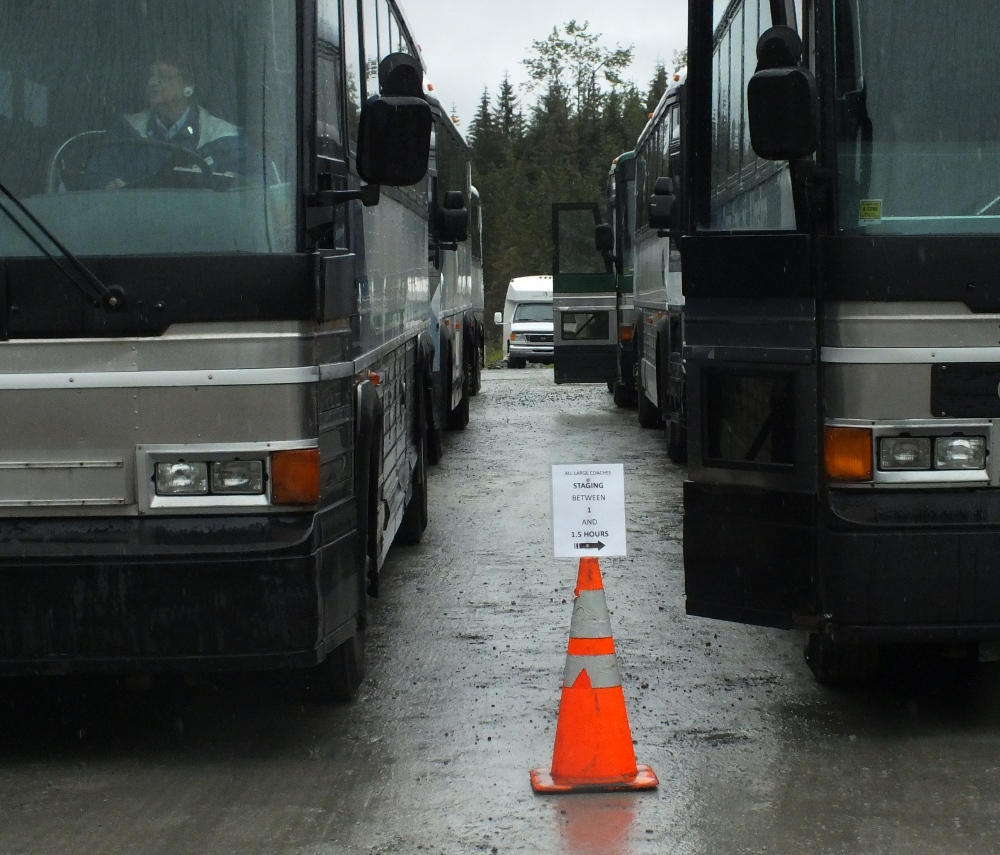
Managers of Juneau’s most popular tourist attraction say they’re planning for a more sustainable facility, even as the very object of many a visitors’ fascination continues retreating at a faster rate because of climate change.
Most of the $415,000 dollars for drafting a master plan for the U.S. Forest Service’s Mendenhall Glacier Visitor Center comes from the Federal Highway Administration. The plan may address everything from Glacier Spur Road access to improving parking, culverts, trails and other outdoor areas, and even heat loss from the large, inefficient windows at the Visitor Center.
Visitor Center Director John Neary briefly explained the plan during a press conference Tuesday about potential impacts to the Alaska tourism industry from climate change.
“It seems like a no-brainer to me,” Neary said.
We have people coming on cruise ships that are belching emissions that are contributing (to climate change), and they get on diesel buses that are belching emissions, and they land at the glacier, and get off, and they see this glacier, and they’re not making the connection between everything they’ve just done and what they’re seeing before them.”
Neary went into more detail during an interview with KTOO immediately after the teleconferenced presentation. He’s open to ideas such as reconstruction of a Nugget Creek hydroelectric project that served miners a century ago, closing off the end of Glacier Spur Road and using an electric circulator or tram to transport visitors from a parking lot to the Center, and offering incentives for tour companies to electrify their bus fleet.

Such as, if we were to provide plug in stations for those buses with electricity at competitive rates, and with those stations offering the best parking spot that is available.”
Neary points out that the Mendenhall Glacier is the most popular tourism destination with 450,000 visitors, or almost half of the total number of cruise ship passengers that visit Juneau each year. Of that number, about 10,000 visitors to the glacier are locals. He also said companies can’t sell trips to other destinations in Juneau (like the DIPAC hatchery, for example) unless the Mendenhall Glacier is included in the package.
Neary admits that achieving zero-net energy and zero-net waste at the Visitor Center, or entirely eliminating carbon emissions would be extremely difficult, if not impossible. But that’s not the ultimate goal anyway. He said their job as interpreters is about making that link, or connecting people to the landscape in a way that they never had thought about before.
We’re not making the fact that ‘You are the cause of the retreating glacier. You and everyone else.’ We all collectively need to address this. And a starting point would be right here at this Visitor Center.”
He hopes that visitors will then go home, start a discussion, and take action in their own community.
Neary said they’ll finish the plan and have priorities identified by next spring. Implementation of the plan, however, may take years and a lot more funding.
